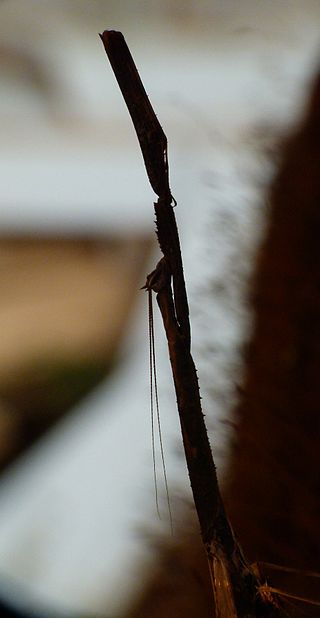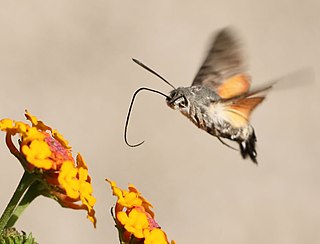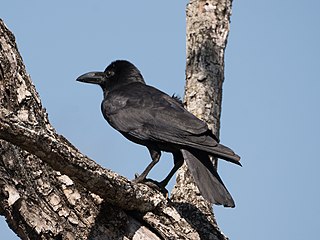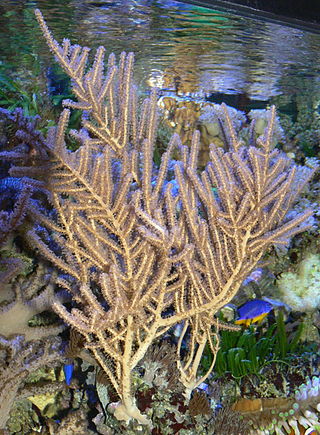
Cimolodonta is a clade of multituberculate mammals that lived from the Cretaceous to the Eocene. They probably lived something of a rodent-like existence until their ecological niche was assumed by true rodents. The more basal multituberculates are found in a different suborder, "Plagiaulacida", a paraphyletic group containing all non cimolodontan multituberculates.

The chasers, darters, skimmers and perchers and their relatives form the Libellulidae, the largest dragonfly family in the world. It is sometimes considered to contain the Corduliidae as the subfamily Corduliinae and the Macromiidae as the subfamily Macromiinae. Even if these are excluded, there remains a family of over 1000 species. With nearly worldwide distribution, these are almost certainly the most often seen of all dragonflies.

16P/Brooks, also known as Brooks 2, is a periodic comet discovered by William Robert Brooks on July 7, 1889, but failed to note any motion. He was able to confirm the discovery the next morning, having seen that the comet had moved north. On August 1, 1889, the famous comet hunter Edward Emerson Barnard discovered two fragments of the comet labeled "B" and "C" located 1 and 4.5 arc minutes away. On August 2, he found another four or five, but these were no longer visible the next day. On August 4, he observed two more objects, labeled "D" and "E". "E" disappeared by the next night and "D" was gone by the next week. Around mid-month, "B" grew large and faint, finally disappearing at the beginning of September. "C" managed to survive until mid-November 1889. The apparition ended on January 13, 1891. After the discovery apparition, the comet has always been over two magnitudes fainter.

Anchisaurus is a genus of basal sauropodomorph dinosaur. It lived during the Early Jurassic Period, and its fossils have been found in the red sandstone of the Upper Portland Formation, Northeastern United States, which was deposited from the Hettangian age into the Sinemurian age, between about 200 and 192 million years ago. Until recently it was classed as a member of Prosauropoda. The genus name Anchisaurus comes from the Greek αγχιanchi-; "near, close" + Greek σαυρος ; "lizard". Anchisaurus was coined as a replacement name for "Amphisaurus", which was itself a replacement name for Hitchcock's "Megadactylus", both of which had already been used for other animals.

Aniba is an American neotropical flowering plant genus in the family Lauraceae. They are present in low and mountain cloud forest in Caribbean islands, Central America, and northern to central South America.

Juriniopsis is a genus of flies in the family Tachinidae.

Toxoderidae is a family of praying mantises.

Macroglossini is a tribe of moths of the family Sphingidae described by Thaddeus William Harris in 1839.

The Indian jungle crow is a species of crow found across the Indian Subcontinent south of the Himalayas. It is very common and readily distinguished from the house crow, which has a grey neck. In the past the species was treated as a subspecies of another crow species, but vocalizations and evidence from ectoparasite co-evolution and phylogenetic evidence have led to it being considered as a distinct species in modern taxonomic treatments. It differs in its voice from the large-billed crow found in the higher elevations of the Himalayas and the eastern jungle crow overlaps in the eastern part of its range. In appearance, it can be difficult to distinguish from either of these species although the plumage tends to be more uniformly glossed in purple and has a longer bill with a fine tip and a less arched culmen. The Himalayan species has a slightly wedge-shaped tail, unlike the rounded tail of the Indian jungle crow and tends to glide a lot.

Rhinonyssidae is a family of mites in the order Mesostigmata. There are about 16 genera and at least 460 described species in Rhinonyssidae.

Harrison Gray Dyar Jr. was an American entomologist. Dyar's Law, a pattern of geometric progression in the growth of insect parts, is named after him. He was also noted for eccentric pursuits which included digging tunnels under his home. He had a complicated personal life and along with his second wife he adopted the Baháʼí Faith.

Holaxonia is a suborder of soft corals, a member of the phylum Cnidaria. Members of this suborder are sometimes known as gorgonians and include the sea blades, the sea fans, the sea rods and the sea whips. These soft corals are colonial, sessile organisms and are generally tree-like in structure. They do not have a hard skeleton composed of calcium carbonate but have a firm but pliable, central axial skeleton composed of a fibrous protein called gorgonin embedded in a tissue matrix, the coenenchyme. In some genera this is permeated with a calcareous substance in the form of fused spicules. Members of this suborder are characterized by having an unspiculated axis and often a soft, chambered central core. The polyps have eight-fold symmetry and in many species, especially in the families Gorgoniidae and Plexauridae, contain symbiotic photosynthetic algae called zooxanthellae. These soft corals are popular in salt water aquaria.

Antipathes is a genus of coral in the order Antipatharia, composed of black coral. Distinct features vary greatly within this genus: it contains symmetrically aligned as well as irregularly shaped corals, a range of different colors, and colonies that can be either sparsely branched or closely packed. polyps for these corals have six tentacles that are each lined with stinging cells. Unlike their reef-building cousins, these coral lack photosynthesizing algae and are not restricted to the lighter surface regions. They prefer to live in deeper waters near currents so they can catch and eat passing zooplankton.
Liopropoma emanueli, the Cape Verde basslet, is a species of marine ray-finned fish, related to the groupers and classified within the subfamily Epinephelinae of the family Serranidae. It is endemic to the Atlantic waters around Cape Verde, western Africa where it is found in rocky areas at depths of 20 to 36 metres. Its length is 10 to 12 cm.

Antipathella fiordensis is a species of colonial coral in the order Antipatharia, the black corals, so named because their calcareous skeletons are black. It was first described as Antipathes fiordensis by the New Zealand zoologist Ken R. Grange in 1990, from material collected in the steep-sided fiords of Fiordland in the southeastern South Island, New Zealand. A 2001 revision of the Antipatheria put this species in the newly created genus Antipathella.

Smitanosaurus is a genus of dicraeosaurid sauropod dinosaur from the Late Jurassic of Colorado. The genus contains one species, S. agilis, originally assigned to the defunct genus Morosaurus.

Dolichopithecus is an extinct genus of Old World monkey that lived in Europe during the Late Miocene and Pliocene.
Bathypathes is a genus of black coral in the family Schizopathidae.
Patriarchus is an extinct genus of interatheriid notoungulates that lived during the Early Miocene in what is now Argentina. Fossils of this genus have been found in the Santa Cruz Formation of Argentina.















